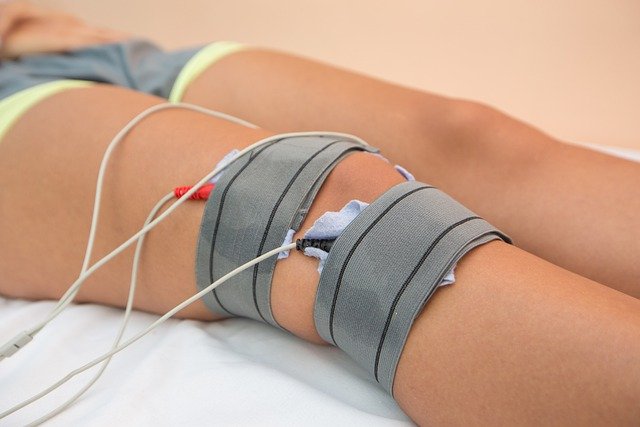
Arthritis Has Some Early Signs
8 Early Signs of Arthritis. It’s not unusual to experience pain in your joints on occasion, especially if you actively participate in high-impact activities. That unwanted ouch can be caused by injured muscles, tendons and ligaments around the joint. But also by tendonitis, a sprain or a strain.
However, if you start experiencing aching, pain and stiffness on a routine basis. In particular if the pain is right at the joint, you may be developing arthritis. say leading rheumatologists at the Johns Hopkins Arthritis Center in Baltimore. Also, your risk of arthritis increases as you age, and it’s a leading cause of disability in the U.S. And affecting around 58.5 million people, according to the Center for Disease Control and Prevention (CDC).
Inflammatory arthritis vs. osteoarthritis
8 Early Signs of Arthritis. Arthritis actually describes over 100 different conditions that affect joints and the surrounding tissue. They fall into two main categories: inflammatory arthritis and osteoarthritis (OA).
Inflammatory Arthritis
Inflammatory arthritis is a systemic disease in which the mechanisms that normally protect your body attack your own joints and tissues instead. The most well-known example is rheumatoid arthritis (RA), which tends to be symmetrical, meaning you’ll have problems in the same joints on both sides of your body, like both wrists or both knees.
Osteoarthritis
The second type of arthritis — and the most common form — is osteoarthritis. A degenerative disorder, it’s caused by trauma or age-related wear and tear on your joints over time. OA is most likely to affect weight-bearing joints such as the knees, hip, lower spine or big toe, but it can also cause pain and stiffness in your thumb or finger joints.
8 Early signs of arthritis
8 Early Signs of Arthritis. Here are some early arthritis symptoms that should prompt you to see a medical provider.
1. Pain in a joint.
Pain or aching in a joint that gradually becomes worse over time is a classic symptom of arthritis, says Lisa Cannada, M.D., an orthopedic trauma surgeon at Novant Health in Charlotte, North Carolina. The pain may be triggered by activity, or it may set in after activity or at the end of a long day.
2. Joint swelling and tenderness.
As arthritis gets worse, it can cause joints to be swollen and tender. It may hurt when you press down on the joint.
3. Joint stiffness, especially in the morning.
Stiffness may occur after prolonged sitting, after activity or when you wake up. “It’s a feeling that you need lubrication to do something,” Cannada explains. Morning stiffness that lasts more than 30 minutes is a hallmark of RA.
4. Grating sound or sensation.
Grinding or grating as a joint moves is a sign the cartilage in your joint has worn down and can indicate arthritis, Cannada says. It’s most common in the knee and hip but can affect other joints as well.
5. Pain in a joint that was previously injured.
Many cases of osteoarthritis occur in a part of the body that suffered a prior injury or trauma. “If a football player had a knee injury back in high school, then they’re likely to get knee osteoarthritis later,” Haque says.
6. Groin pain.
Many people don’t realize pain from hip arthritis radiates to the groin, not the outside of the hip, Cannada says. Hip arthritis can also cause pain in your thigh or buttocks.
Symmetrical joint pain.
Rheumatoid arthritis often causes problems in the same joints on both sides of your body, like both wrists or both knees.
8. Pain or stiffness in your hands and feet.
Rheumatoid and other types of inflammatory arthritis often develop first in the small joints of your hands, wrists and feet, Haque says. “Somebody with inflammatory arthritis may say, ‘In the morning when I wake up, my feet are very stiff, I can barely move them, and it’s painful to bend my toes. Then the day goes on and I feel better.’ ”
Arthritis treatment
Arthritis has no cure, but there are steps you can take to minimize pain and stiffness. Says Rochelle Rosian, M.D., a rheumatologist with the Cleveland Clinic Department of Rheumatologic and Immunologic Diseases. “There is a lot we can do to help you feel better,” she says. “You can live a long and healthy life with arthritis.”
Your primary care doctor may be able to treat your symptoms if they’re mild, or he or she may refer you to a rheumatologist, a sports medicine doctor, an orthopedist or a podiatrist, depending on your symptoms and where your problem is located.
Expect your doctor to ask you what makes the pain better and what makes it worse. Also, how long you’ve had the pain and stiffness and whether you have had any trauma to the area. It’s not unusual for a high school sports injury to manifest as arthritis in a joint decades later, Rosian says.
Here are some steps your doctor may recommend to help ease your pain.
Weight loss:
You may not want to hear it, but the extra pounds you’re carrying are putting stress on your joints. “For every pound you carry, the force on your knee is multiplied by three,” Rosian says. “If you gain 10 pounds, your knee feels 30 pounds of pressure. Maintaining an ideal body weight is critical for managing arthritis.”
Exercise:
If you are in pain, you may be tempted to move less. But studies show physical activity helps reduce pain. And improve movement in arthritis patients. “Keeping the muscles around your joint active and strong is key in protecting and stabilizing the joint,” Haque says. Low-impact activities like cycling or swimming will be easier on the joints.
Physical therapy:
A physical therapist can teach you specific exercises to do to strengthen the muscles around your joint. He or she can also work with you to correct any gait abnormalities that are putting extra stress on your knees, feet or hips.
Medication:
If you have osteoarthritis, acetaminophen (brand name, Tylenol) is the safest over-the-counter pain reliever for long-term use, Rosian says, but NSAIDs (nonsteroidal anti-inflammatory drugs) like Advil or Motrin may be more effective if your joints are swollen and feel warm to the touch. Some NSAIDs are also available as liquids or gels, which can be rubbed on joints. For rheumatoid arthritis patients, early treatment with specific drugs can improve the long-term outcome.
Topical treatments:
Over-the-counter or prescription creams and sports ointments can help relieve pain. Some patients have also reported success with cannabidiol (CBD) oils and creams, Rosian says.
Joint supports or splints:
A splint or brace can help support and protect a damaged joint. Some immobilize and rest the joint in the ideal position to minimize stress. Others provide support while you perform a task. Examples include wrist splints, knee braces and orthotics.
Injections:
If you are still experiencing pain despite trying other therapies, your doctor may suggest injections of cortisone (or hyaluronic acid) for short-term relief. However, two recent studies suggest that repeated cortisone injections may lead to more joint damage and pain. Some doctors have started offering platelet-rich plasma (PRP) or stem cells as an alternative, but their effectiveness has not been proven.
Surgery:
Eventually, your doctor may recommend surgery to replace or stabilize your joint. There are many different surgical options, depending on where you have pain and how bad it is. For severe cases, you may need a total joint replacement.
In Conclusion
Arthritis can make your life difficult and reduce your mobility, so it is important that you know the warning signs. So then, some of you may already have symptoms and think it is just old age. After reading this, you will be better informed and realise what the problem is and who can help.
Important Note *
Remember that everyone is different, and it is ultimately YOUR RESPONSIBILITY to find what your body responds to. So please do your due diligence before trying anything new, including getting Medical Advice to ensure your safety and peace of mind.
Connect with me and leave a comment or two on my social media.




6 replies on “8 Early Signs of Arthritis”
Good information. Thank you
Hi Vergne, I appreciate you taking the time to email me with this comment, I try hard to make posts relevant and with good information, so thank you, all the very best Ian
Many thanks for educating me on Arthritis. Was there some research done on okra/ladies’ finger slime?
Hi hemachandra, Okra is a healthy vegetable with almost no side effects, I may feature it in a post, soon, thanks for your comment, all the best Ian
Thanks. My third finger has stiffening up with pains most mornings.
Hi Mkpeti Ayi, I appreciate you taking the time to comment, and I am happy the post was informative for you, thank for being part of Pensioner Fitness, all the best Ian